
EDCTP portfolio: Emerging diseases
index


The AfriCoVER project is using an existing health and demographic surveillance site to gain a detailed picture of the spread of COVID-19 through a peri-urban neighbourhood in Mozambique.
Mapping the spread of COVID-19 in Mozambique

A crucial COVID-19 challenge is to understand the transmission of SARS-CoV-2 in typical sub-Saharan African settings. For a range of reasons, the epidemic may play out very differently in such settings, with important implications for disease control. Environmental factors, the age structure of populations, and high levels of HIV and TB infections could all have a significant impact on spread of COVID-19 in the region.
Health and demographic surveillance sites already have in place an infrastructure for monitoring population health. It is therefore feasible to supplement ongoing activities with collection of additional data on COVID-19 to rapidly provide insight into transmission dynamics.
The challenge

The AfriCoVER project is collecting samples and data from a subset of the 16,500 residents of the health and demographic surveillance site at Maputo in Mozambique. Household visits and links with clinics will be used to identify COVID-19 cases, at least 100 of whom will then be followed to track transmission to household contacts.
To provide an indication of the spread of COVID-19 in the community, the project will also collect blood samples from a random selection of residents (n=2400) in different age groups at baseline and 3, 6 and 16 months, and check for past infection. A high-throughput platform will be established to analyse finger-prick blood samples, which will detect antibodies against SARS-CoV-2 and other human coronaviruses, which could influence responses to SARS-CoV-2.
To conduct the serosurveys, the project will validate an existing Luminex platform with sera from European populations and establish the platform in Mozambique. Further validation will be conducted with Mozambican sera and against two commercial ELISAs.
The data collected will be used to generate a model of the spread of the epidemic and to examine how different public health interventions affected transmission.
The project

The AfriCoVER project will generate a detailed picture of the COVID-19 epidemic in the peri-urban neighbourhood of Maputo, Mozambique. It will help to identify the drivers of transmission, those most likely to transmit the virus, and those at greatest risk of being infected.
The data will allow estimates to be made of key disease transmission parameters, including numbers of asymptomatic infections, so a model of the epidemic can be created that reflects the behaviour of the virus in the local setting. This will be of relevance to disease control in Maputo and in other similar settings in sub-Saharan Africa characterised by high levels of poverty, HIV and TB. It will also provide key data on a possible approach to high-throughput antibody testing that could be of general relevance to the region.
Impact


“
test the safety and efficacy of this new formulation in young children
”
Bringing antiretroviral drugs to children

The CHAPAS trials have ensured that many more children with HIV have benefited
from life-saving antiretrovirals.
EDCTP portfolio: HIV & HIV-associated infections
The challenge
A crucial COVID-19 challenge is to understand the transmission of SARS-CoV-2 in typical sub-Saharan African settings. For a range of reasons, the epidemic may play out very differently in such settings, with important implications for disease control. Environmental factors, the age structure of populations, and high levels of HIV and TB infections could all have a significant impact on spread of COVID-19 in the region.
Health and demographic surveillance sites already have in place an infrastructure for monitoring population health. It is therefore feasible to supplement ongoing activities with collection of additional data on COVID-19 to rapidly provide insight into transmission dynamics.

The AfriCoVER project is collecting samples and data from a subset of the 16,500 residents of the health and demographic surveillance site at Maputo in Mozambique. Household visits and links with clinics will be used to identify COVID-19 cases, at least 100 of whom will then be followed to track transmission to household contacts.
To provide an indication of the spread of COVID-19 in the community, the project will also collect blood samples from a random selection of residents (n=2400) in different age groups at baseline and 3, 6 and 16 months, and check for past infection. A high-throughput platform will be established to analyse finger-prick blood samples, which will detect antibodies against SARS-CoV-2 and other human coronaviruses, which could influence responses to SARS-CoV-2.
To conduct the serosurveys, the project will validate an existing Luminex platform with sera from European populations and establish the platform in Mozambique. Further validation will be conducted with Mozambican sera and against two commercial ELISAs.
The data collected will be used to generate a model of the spread of the epidemic and to examine how different public health interventions affected transmission.
The project
The later CHAPAS-3 trial compared the efficacy and safety of three fixed-dose combinations including two without stavudine (found to have some long-term side effects in adults, leading to a recommendation that its use be discontinued in children). The trial the first of its kind in Africa studied nearly 500 children at four sites in two African countries.
The AfriCoVER project will generate a detailed picture of the COVID-19 epidemic in the peri-urban neighbourhood of Maputo, Mozambique. It will help to identify the drivers of transmission, those most likely to transmit the virus, and those at greatest risk of being infected.
The data will allow estimates to be made of key disease transmission parameters, including numbers of asymptomatic infections, so a model of the epidemic can be created that reflects the behaviour of the virus in the local setting. This will be of relevance to disease control in Maputo and in other similar settings in sub-Saharan Africa characterised by high levels of poverty, HIV and TB. It will also provide key data on a possible approach to high-throughput antibody testing that could be of general relevance to the region.
ratios forfixed-dose combinations and on appropriatedosage according to weight.
The CHAPAS-3 trial confirmed the effectiveness of fixed-dose combinations, providing further impetus to the rollout of antiretrovirals to children. Its evidence on abacavir informed the WHO recommendation of abacavir-containing combinations for first-line therapy in children. Trial data have also been used to support applications for regulatory approval for new scored efavirenz tablets.
Impact
L’homme RF et al. Nevirapine, stavudine and lamivudine pharmacokinetics in African children on paediatric fixed-dose combination tablets. AIDS. 2008;22(5):557–65.
Mulenga V et al. Abacavir, zidovudine, or stavudine as paediatric tablets for African HIVinfected children (CHAPAS-3): an open-label, parallel-group, randomised controlled trial. Lancet Infect Dis. 2016;16(2):169–79.
WHO. Guidelines on the use of antiretroviral drugs for treating and preventing HIV infection: recommendations for a public health approach. 2010.
WHO. Consolidated guidelines on the use of antiretroviral drugs
for treating and preventing
HIV infection: Recommendations for a public health approach
(second edition). 2016
Projects: Children with HIV in Africa Pharmacokinetics and Adherence of Simple Antiretroviral Regimens (CHAPAS): CHAPAS-1 and -3
Project lead: Professor Chifumbe Chintu, University Teaching Hospital, Zambia (CHAPAS-1); Dr Veronica Mulenga, University Teaching Hospital, Zambia (CHAPAS-3)
Target population(s): Children with HIV
Sample size: 71 (CHAPAS-1); 480 (CHAPAS-3)
Countries involved: Ireland, the Netherlands, the UK, the USA, Zambia (CHAPAS-1); Uganda, Zambia (CHAPAS-3)
Project duration: 2005–2009 (CHAPAS-1); 2010 –2011 (CHAPAS-3)
EDCTP funding: €1.2M (CHAPAS-1); €4.6M (CHAPAS-3)
Total project funding: €1.2M (CHAPAS-1); €5.0M